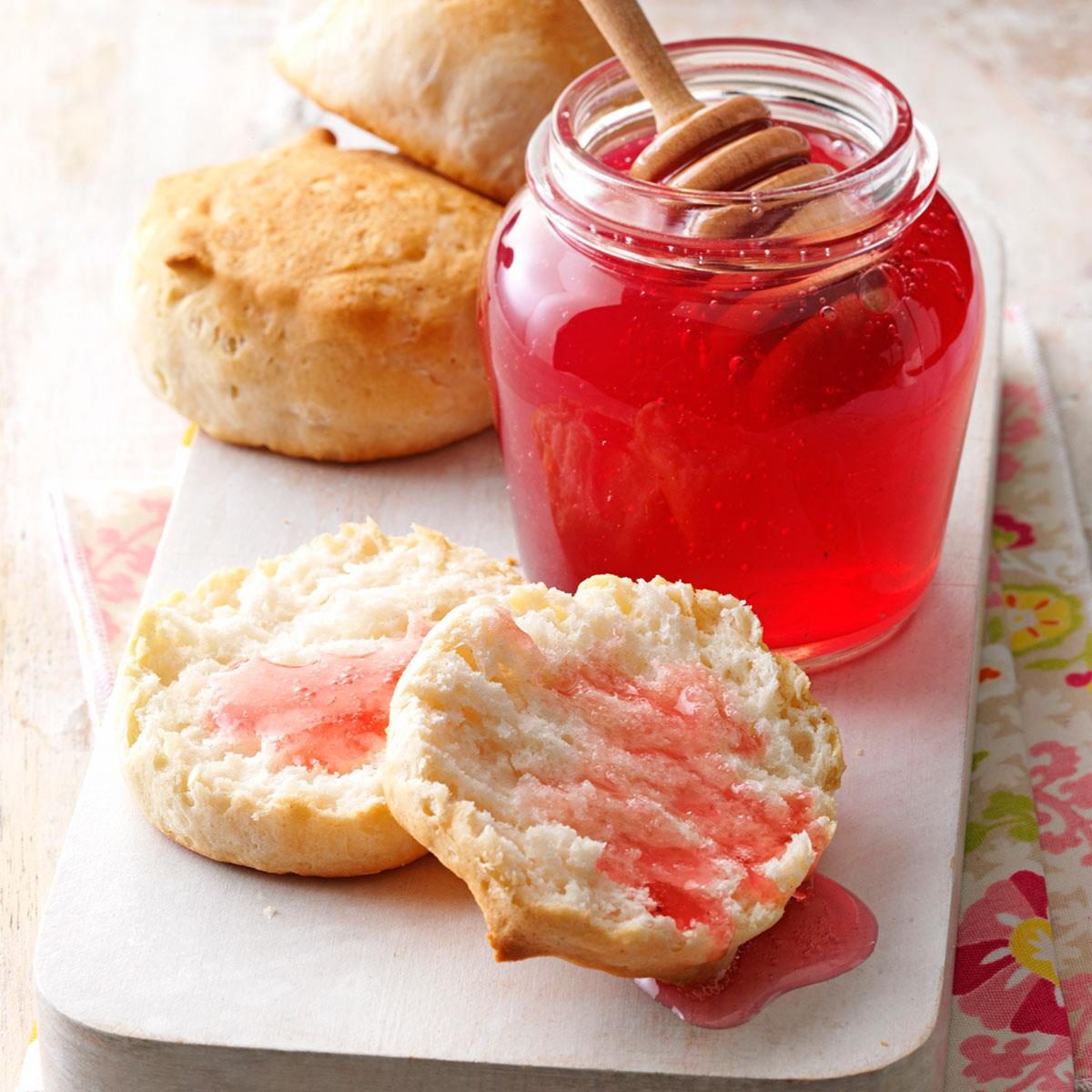Rose water is a common ingredient in Middle Eastern cooking and in many Indian recipes—especially desserts. With a delicate floral aroma and taste, it can bring out a recipe’s sweetness and balance out more tart ingredients. Here’s how to use rose water for cooking and baking.
Where to Get Rose Water for Cooking
Look for rose water in the grocery store baking aisle. It may not be at your local Kroger, but you’ll likely find it at Whole Foods or your nearest Indian grocer. You can also buy rose water online—Cortas rose water is a popular brand.
Editor’s tip: Make sure you buy rose water that’s intended for cooking and baking. It’s also a skincare product, but you want food-grade rose water.
Tips for Cooking with Rose Water
To learn more about this floral ingredient, we talked with Hetal Vasavada—the food blogger, cookbook author and baker behind the blog Milk and Cardamom. Vasavada uses rose water in many of her Indian-inspired recipes, including her flower petal-flecked rose shortbread cookies.
Start small
While rose water can add a beautiful flavor and aroma to a recipe, it can quickly become overpowering. “If you use too much of it, it ends up smelling and tasting like potpourri,” Vasavada says.
If you’re adding rose water to something that you aren’t heating—such as whipped cream or Vasavada’s lemon cardamom and rose posset—add it 1/4 teaspoon at a time, she says. Mix and taste as you go until you reach the perfect amount of rosiness.
Understand how it interacts with heat
Rose water gets less potent when you apply heat to it because its delicate flavor molecules evaporate, says Vasavada, who majored in biochemistry. Because of this, you’ll need to use a little more rose water for recipes that require heat, she says. For instance, you may need 1 to 1-1/2 teaspoons in baked recipes, compared to around 1/4 teaspoon in uncooked recipes.
Pair it with fruit
Rose water goes well with strawberries and other tart fruits that balance out its sweet smell and flavor, Vasavada says. For example, her raspberry rose rhubarb cheesecake tart has 1 teaspoon of rose water in the crust and 2 teaspoons in the filling.
Editor’s tip: You can find more of Vasavada’s recipes in her cookbook, Milk and Cardamom. (Here are other Indian cookbooks we love.)
How to Use Rose Water for Cooking
From desserts to drinks and even savory dishes, here’s some inspiration for how to use rose water in the kitchen.
Desserts with Rose Water
Across many different cultures, rose water is most commonly used in dessert recipes. Here are some of the ways in which different cuisines use it:
- Indian: Rose water is in many Indian sweets, which are known as mithai or mishti. Among popular Diwali sweets, rose water is often in rasmalai (a cold, juicy treat) and lyangcha (a deep-fried sweet).
- Middle Eastern: Rose water is often in Middle Eastern recipes like halva, Turkish delight and sometimes baklava. It’s a key ingredient in this Lebanese Rose Water Rice Pudding and this Israeli Malabi with Pomegranate Syrup.
- French: Rose water is sometimes in French pastries like madeleines, macarons and these Pistachio Palmiers.
Drinks with Rose Water
Adding a dash of rose water is a great way to instantly elevate a cocktail, such as this Ruby Rose Paloma.
Additionally, Vasavada recommends adding it to lemonades and strawberry daiquiris to balance the tart fruit flavors in those beverages. She also says rose water is in Indian drinks such as faloodah (a cold dessert drink often served with ice cream) and Rooh Afza (a syrup that’s in many other sweet beverages).
Savory Dishes with Rose Water
While rose water is known for bringing out the sweetness in recipes, it’s sometimes used in savory dishes—like this lamb stew with rose water from the food blog Analida’s Ethnic Spoon and this saffron rose biryani from the blog Naturally Nidhi.
Alternatives for Rose Water
If you don’t have rose water on hand, you can go without it. Your final product will lack the unique floral aroma and taste, but the recipe will still turn out. You can also try substituting one of these ingredients:
- Orange blossom water: Orange blossom water has a very different taste than rose water, but they’re both common in Middle Eastern cooking. As long as you’re prepared for a different flavor, this can be a good swap.
- Rose essence: More concentrated than rose water, you only need a drop of rose essence, which you can find at Indian grocers and online.
- Rose syrup: Less potent than rose water or rose essence, rose syrup is made with sugar, so you may need to alter the recipe’s sugar content accordingly.
You can also use rose petals to make your own rose water, like in this Rose Petal Honey recipe.
The post How to Use Rose Water for Cooking and Baking appeared first on Taste of Home.
Teddy Nykiel




